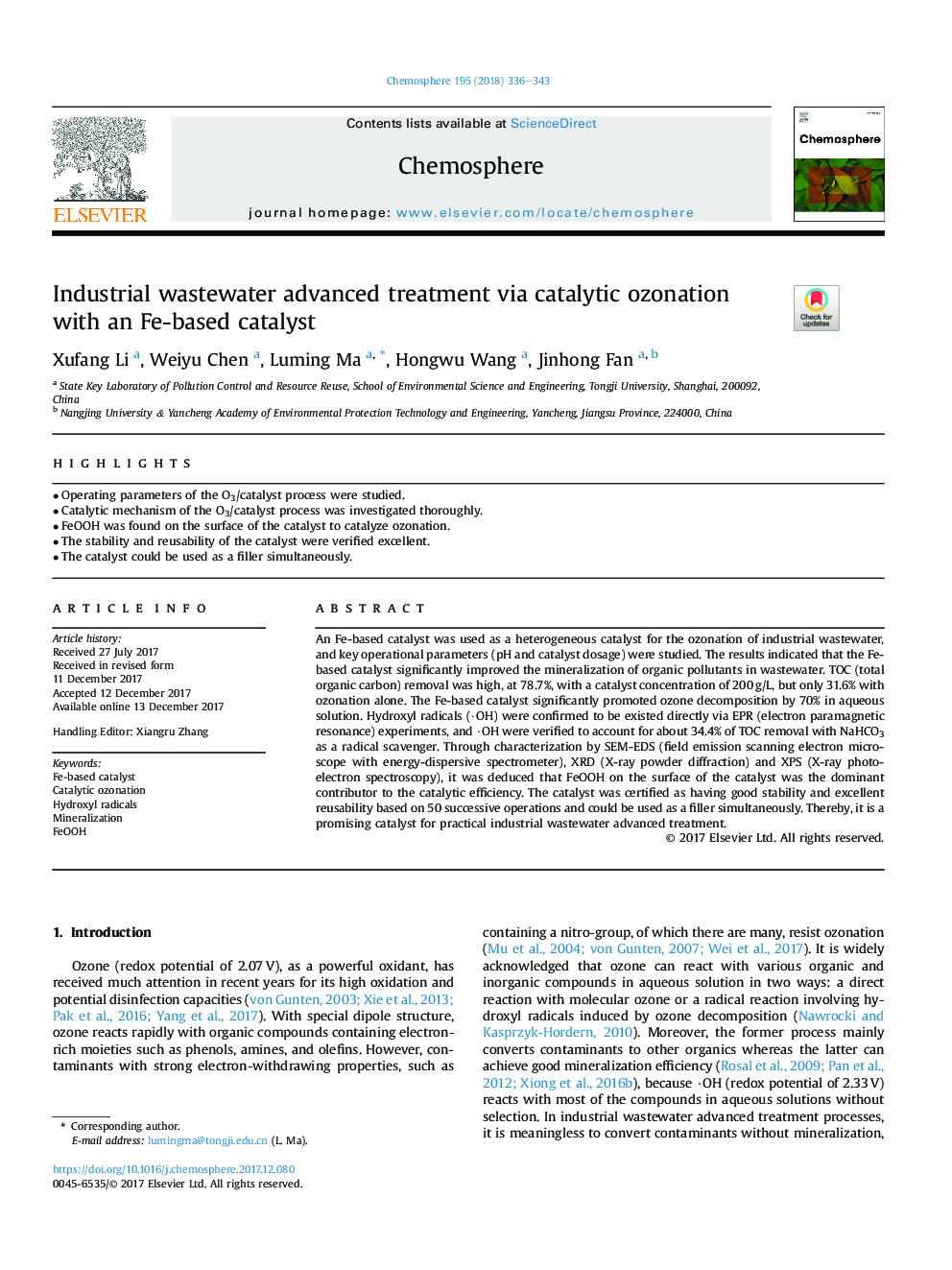| Article ID | Journal | Published Year | Pages | File Type |
|---|---|---|---|---|
| 8852317 | Chemosphere | 2018 | 8 Pages |
Abstract
An Fe-based catalyst was used as a heterogeneous catalyst for the ozonation of industrial wastewater, and key operational parameters (pH and catalyst dosage) were studied. The results indicated that the Fe-based catalyst significantly improved the mineralization of organic pollutants in wastewater. TOC (total organic carbon) removal was high, at 78.7%, with a catalyst concentration of 200â¯g/L, but only 31.6% with ozonation alone. The Fe-based catalyst significantly promoted ozone decomposition by 70% in aqueous solution. Hydroxyl radicals (·OH) were confirmed to be existed directly via EPR (electron paramagnetic resonance) experiments, and ·OH were verified to account for about 34.4% of TOC removal with NaHCO3 as a radical scavenger. Through characterization by SEM-EDS (field emission scanning electron microscope with energy-dispersive spectrometer), XRD (X-ray powder diffraction) and XPS (X-ray photoelectron spectroscopy), it was deduced that FeOOH on the surface of the catalyst was the dominant contributor to the catalytic efficiency. The catalyst was certified as having good stability and excellent reusability based on 50 successive operations and could be used as a filler simultaneously. Thereby, it is a promising catalyst for practical industrial wastewater advanced treatment.
Related Topics
Life Sciences
Environmental Science
Environmental Chemistry
Authors
Xufang Li, Weiyu Chen, Luming Ma, Hongwu Wang, Jinhong Fan,
